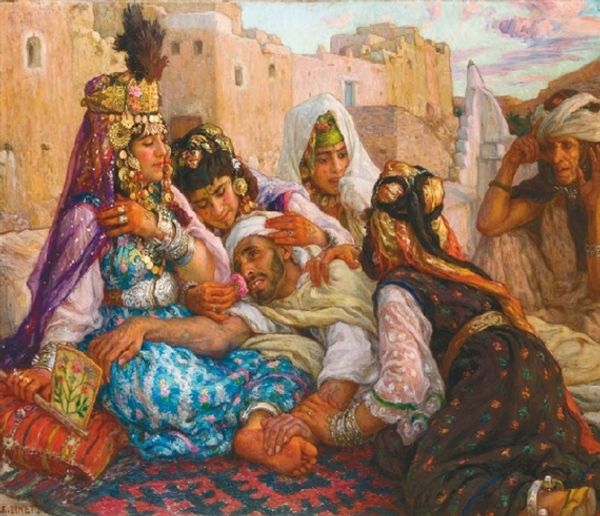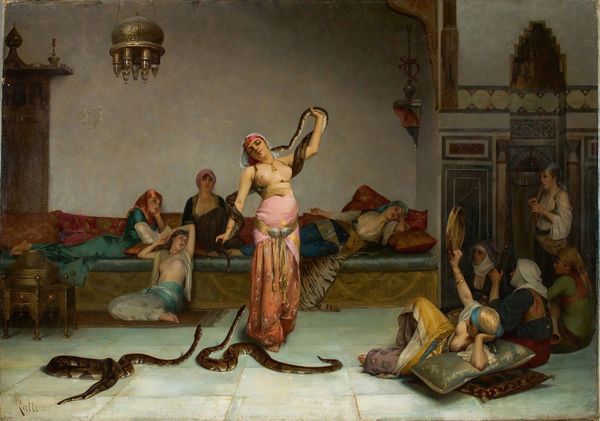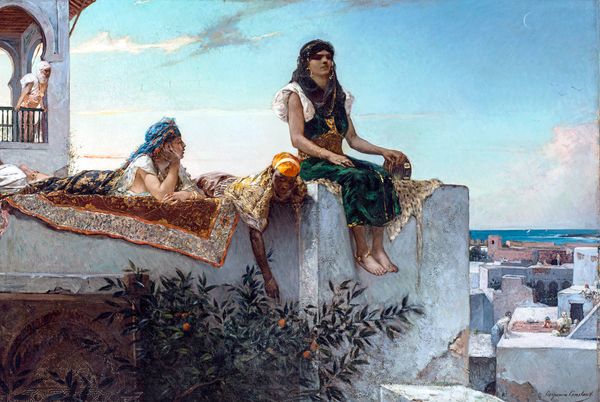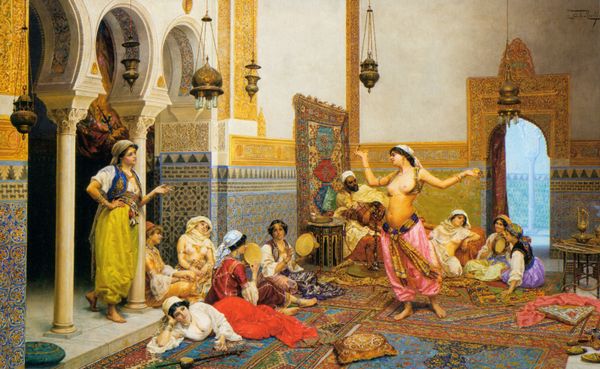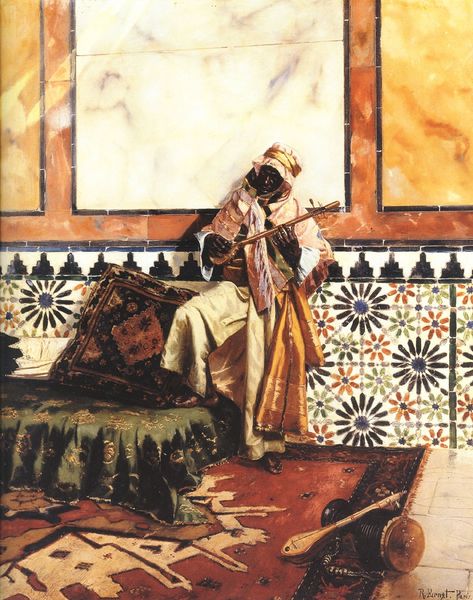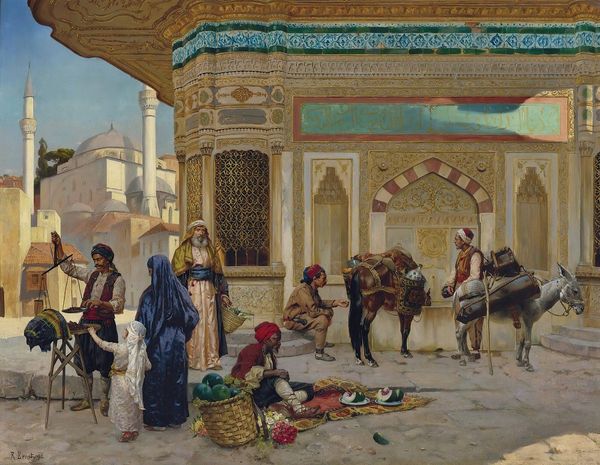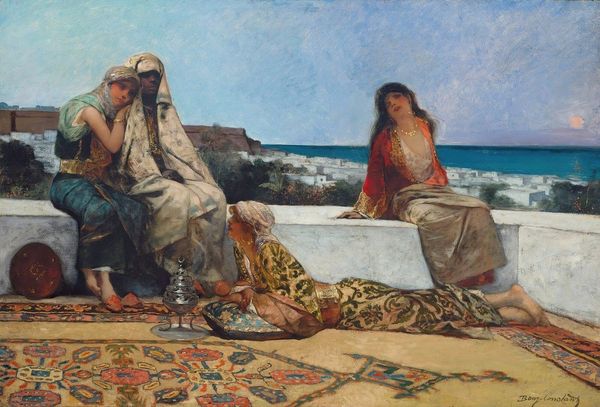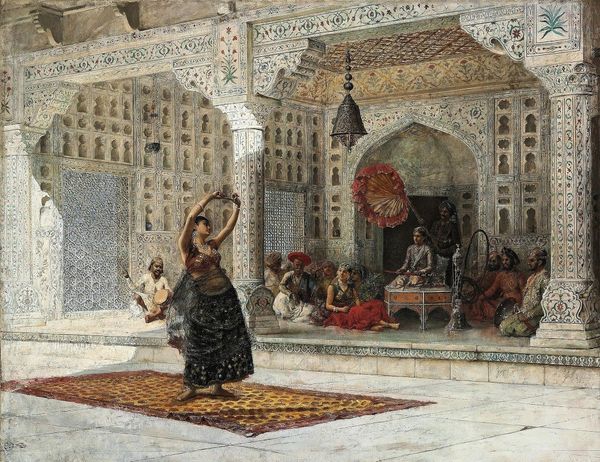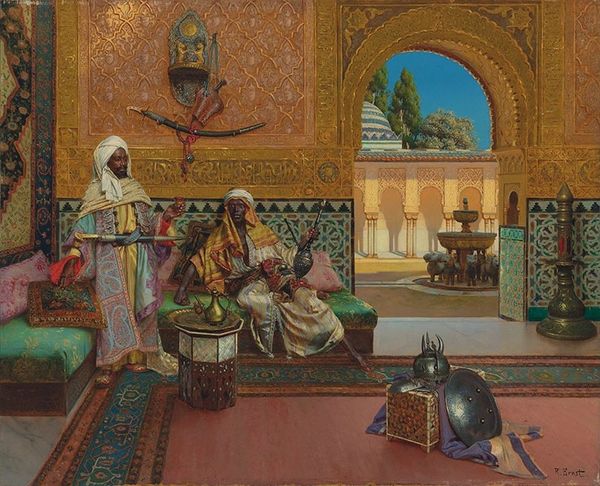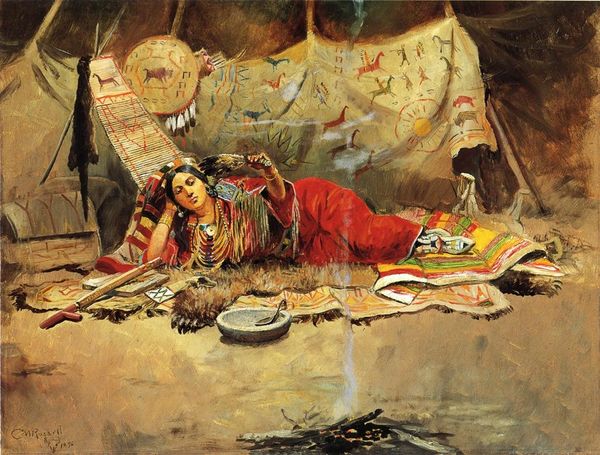
painting, oil-paint
#
figurative
#
painting
#
oil-paint
#
landscape
#
figuration
#
oil painting
#
naive art
#
orientalism
#
genre-painting
#
academic-art
Copyright: Public Domain: Artvee
Curator: This is "An Afternoon Idyll." The painting, by Jean-Joseph-Benjamin Constant, captures a scene of leisurely rest and cultural intermingling. Editor: My first thought? Dreamy and languid. There's something almost cinematic about the way the light spills across the white rooftop and the colorful clothes. A real escapist fantasy. Curator: Yes, the scene certainly romanticizes the 'Orient'. Notice the artist's skillful use of oil paints to render diverse textiles: the carpet beneath the reclining figures, the individual garments, and the varying skin tones. Consider how these materials speak to trade routes, cultural exchange, and colonial power structures in the 19th century. Editor: You are right, it's pretty clear we’re in a male gaze, a staged and idyllic view of otherness. But I can still enjoy the sheer artistic skill—the play of light and shadow on the faces, the texture of the fabrics… Even the slightly awkward composition with that musician kind of squeezed in creates a unique tension. Curator: Precisely. It invites us to unpack those very tensions. The materiality becomes evidence of both artistry and exploitation. The value of such imported fabrics and materials were often directly linked to exploitative colonial trade practices. It’s important not to simply appreciate beauty without considering its origin and impact. Editor: Well, for me, beyond all of that context, which is super important, there's also something about the painting's stillness that I find appealing. It feels like time has stopped. These women are lost in their own little world. And those doves cooing on the rooftop? It adds this subtle soundtrack to a silent movie, in my mind anyway. Curator: True. Though this ‘stillness’ might reflect a Western ideal of Oriental passivity, it’s still a moment captured, a record of interaction and presentation carefully mediated through canvas and oil. Editor: Right, it is art, not reality. Thinking about it now, I’m not sure if this painting has so much to teach us about Oriental culture itself, but how the western world perceived, exoticized and fantasized it during a precise moment in history. Curator: Agreed, that perspective shifts our understanding entirely. Focusing on how raw materials are manipulated to meet the expectations of a specific target audience unveils many layers to the painting. Editor: Well, thank you for taking me beyond what I simply "see," framing that original impression through socio-economic insight. It's fascinating how an image can hold both beauty and embedded critique simultaneously.
Comments
No comments
Be the first to comment and join the conversation on the ultimate creative platform.
